Kitchen Project #132: How to Make a Cookbook
Interviews with the women who made SIFT, an IWD special
Every year around International Women’s Day, I’ve made it a habit here to mark the occasion with an interview special. In 2022, I celebrated some of my favourite cake bakers. In 2023, it was an author special. And in 2024, I have the unrivalled joy of interviewing the women who have worked behind the scenes on my debut cookbook.
In less than two months, on May 2nd, SIFT: The Elements of Great Baking will hit the shelves of UK bookshops (more information for international release dates, soon, I promise!). Working and producing this book was the honour of a lifetime and I couldn’t be more excited for you to read it! But I can’t take all the credit.
Behind every cookbook is a huge team of incredible people. From agents to editors, stylists to photographers, designers to copyeditors, it truly takes a village. Perhaps I’m biased, but I genuinely believe Sift has the best team ever. And I’m thrilled to introduce you to a few of them today with a very special interview series packed with tips, advice and insight.
But in case you are wondering, Nicola, what on earth are you talking about? Let me tell you.
What is Sift?
No idea what I’m talking about? Well, let me tell you: ‘SIFT: The Elements of Great Baking’, my very first cookbook, will be published by Ebury in May. Divided into two parts, we start by taking a journey through the ingredients that underpin great bakes - Flour, Sugar, Eggs, Fat - before delving into the techniques that bring our recipes to life - Texture, Colour, How Things Rise and, of course, a Technical Overview. It’s the reference book of my dreams with all the fun diagrams.

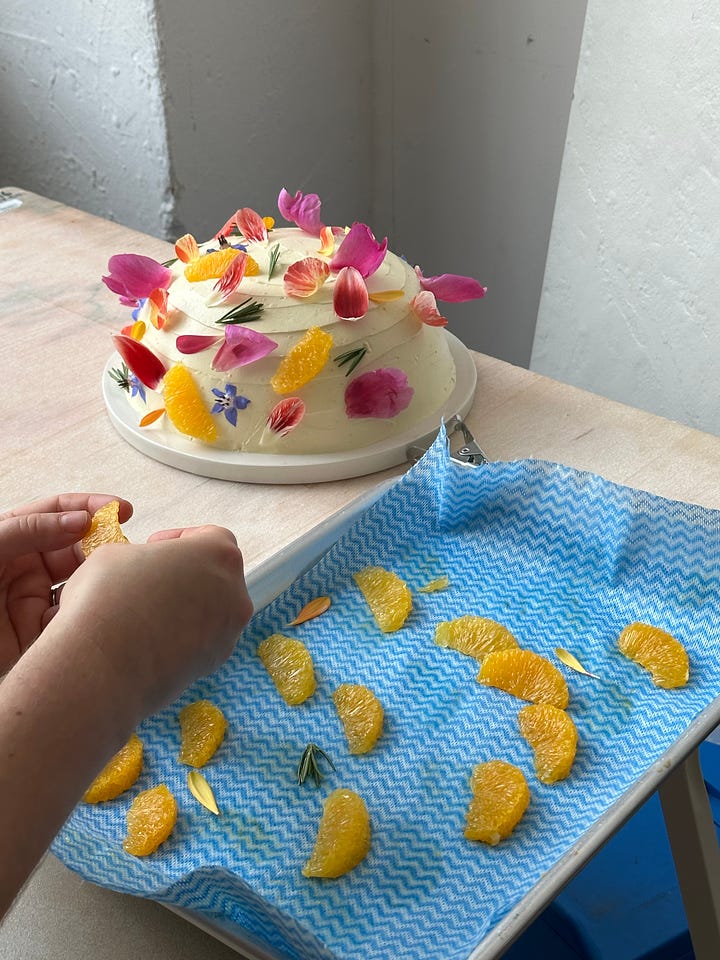
The second half of the book is packed with recipes, divided into how long you have to bake: Whether you've got an afternoon, a day or a weekend, this book has something for you! The recipes are buildable, meaning you can spend hone your lamination skills in a more simple recipe before moving on to nailing cross laminated galette des rois, or perfect croissants. I’ve got you!
If I had to sum it up, this is the book I wish I'd had when I first started baking. When I started out, I was intimidated by a lot of the big, heavy books aimed at professionals, but I wanted more detail than some of the home baking books offered. In SIFT, I’ve strived to create a happy medium, blending technical details with base recipes you can go back to again and again. I want this book to live in your kitchen forever, and be your go-to guide every time you bake (or have a question about baking!)
So… how do I get it?
SIFT is available to pre-order now from all great bookstores, including the wonderful Waterstones! And though shopping IRL is dreamy, you can get your order in now.
I'm sure you've heard this before, but pre-orders are a huge part of what makes a book successful. If there's strong pre-orders, the bookshops and salespeople are like ‘ooooh what’s this?’ and start to pay attention, which means they then put more energy into getting it out there! Annnd, btw, you don’t get charged for the book until it’s actually out, so basically you’re just putting your hand up and saying ‘This looks fab! I’d like this please!’ and you’re always guaranteed to get the absolute best price for it.
On KP+ today
On KP+ today, I have the joy of sharing a new pastry for the IWD canon - the Mimosa Tart! Inspired by the fuzzy mimosa cake (recipe here from last year), this tart is a glorious coming together of texture and flavour. A crisp tart shell with a honey & chamomile filling, with custard stuffed mini choux buns adorned with bee pollen, finished with chantilly cream and a dusting of chamomile.
Behind every great cookbook…
Until pretty recently I was totally in the dark about the cookbook process - I had no real idea about how one was commissioned and produced. How did these magical objects come into existence?!
I love nothing more than sharing the ins and outs of baking, and I intend to share as much intel as possible about the book world, too. Today, I’m thrilled to introduce you to some of the brilliant women who played integral parts in making SIFT a reality: My brilliant agent Emily Sweet, my wondrous editor at Ebury Nell Warner, food stylist & baker extraordinaire Holly Cochrane, prop stylist of dreams Hannah Wilkinson and food styling & chef superstar Lucy Rose Turnbull.
In the interviews below, you’ll get a sense of the moving parts in the cookbook engine, with brilliant insight, encouragement and inspiration from my interviewees. Whether you’re an aspiring author, or looking to start out in this industry, or taking the plunge into foodie life full time, I’m confident you’ll learn a lot from these brilliant women. And btw, I’ll share their interviews in order of when I met then during the book process.
Emily Sweet is a literary agent, specialising in cookbooks, based in London. Without Emily, my book simply would not exist! We began working together in 2021 - she has the patience of a saint and was the most incredible, encouraging support throughout the process, keeping us all honest and ensuring we produce the absolute best book possible. An absolute legend!
For people who are new to the world of books, could you describe what the role of an agent is? What is a typical day in the life of a literary agent?
So much of publishing is shrouded in mystery, including the role of the agent, and I’m always keen to demystify the process as much as possible. In short, an agent acts as an author’s champion, first mentoring them throughout the proposal or book-writing process, then introducing the author to a network of publishers with whom they have good relationships. Agents are known for negotiating deals, and that’s an important part of the role, but it’s also about mediating, providing support and ensuring good relationships all round. My day can range from a desk day of emailing and editing to a full day of author/publisher meetings, to a mixture of coffee or lunch catch-ups with editors and agency meetings.
How do you find new writers? At what stage in the cookbook writing process should someone start approaching and talking to an agent?
I’m fairly proactive in terms of finding authors, and social media is the obvious place to start - keeping an eye on what’s interesting and knowing when’s the right time to make an approach is key. I also have wonderful clients who frequently make excellent recommendations and introductions that I’m always grateful for!
For an author, unless you already have a huge platform, I’d say it’s always best to approach an agent once you have a pretty good idea of the concept you’d like to work on. I love being collaborative, and I enjoy building proposals from scratch when someone has a platform but is unsure of the direction they should take, but in general it’s best if someone brings an idea to the table - even if that ends up only being the starting point for a conversation.
One of the biggest speed bumps for my getting started with Sift was the proposal writing process. Could you shed a bit of light on what a book proposal is? And how to approach writing one?
Book proposals are SO important! But they can also involve a lot of work (especially if you’re as forensic as Nicola, ha!), as they’re not only selling tools (to entice a publisher to publish your book) but also your book in microcosm. A proposal may be shorter than a full manuscript, but essentially you’re condensing a 200+ page book into a readable document, and that takes real skill and thought. The good news, though, is that this benefits you as an author - it’s not just for show. Because what you’re really doing with a proposal is laying down the bones, creating a solid foundation to build the final book upon; future you will thank present you for all the time and effort you put in at this stage.
I won’t list all the details of what to include here [check out Emily’s website for more info on this!] but in essence a proposal should demonstrate to a publisher what your book is, why it’s needed, and why you should be the person to write it. You’ll need to prove that there’s a market for your book and how you’ll reach it, as well as providing a detailed contents page showing chapter layout and recipe list - plus some sample recipes and ideally some photos.
What is the best piece of advice you have for someone looking to write a cookbook?
My number one piece of advice would be to consider very seriously the commercial viability of your project. Sure, not every book is destined to be a bestseller, but for a publisher the question of whether or not to publish your book is a business decision, and colour cookbooks are costly to produce, so they’ll need to be confident of securing a return on their investment. One way you can help with this is to remove the blinkers that keep you entirely focused on what you personally want to write about, and also consider what would be really helpful or interesting for people to read about - the two aren’t by any means mutually exclusive.
If you had to host a dinner party and cook only from books that you’ve worked on, what would the menu be?
Oh wow, that’s a challenge! My partner and I generally split this job (he’s the chef and I’m the baker) but I’m going to imagine I have a child-free kitchen for a whole day and can indulge my culinary whims. In which for this time of year I would choose:
To start… Beetroot Terrine with Wholegrain Mustard Cream from Joe Woodhouse’s YOUR DAILY VEG
For mains… Chicken with Morels and Vin Jaune from Alex Jackson’s FRONTIERES
To finish… Two-Tone Chocolate Cake from Philip Khoury’s A NEW WAY TO BAKE
Nell is an editor at Ebury Publishing and my editor on SIFT. We worked closely during every single part of the process, from the MANY versions, to picking the title to working with the book designers, to planning out the shoot team and vibe of the book - Nell worked tirelessly to make the book as good as it could be, guiding the tone and keeping everything on track!
How did you become a book editor? Was it always the plan to work in cookbooks?
I applied for internships after university and an opportunity came up at a literary agency – it was an interesting place to learn the ropes of publishing and figure out the genres I wanted to work in. However, I knew my heart lay in editorial – I really wanted to get stuck into the creative process of book-making and after several months of internships (and some wildly random temping roles in between, including a stint in the back office of a trading company (no thank you) and assistant to the tasting director of a wine mag – great perks!) I landed my first role as an editorial assistant at Octopus. They publish beautiful cookbooks and I’ll forever be grateful to them for introducing me to one of my favourite cooks, Diana Henry.
I remember having to pitch a cookbook idea as part of the interview process – something I’d never done before, but the fact that I found the challenge more fun than nerve-wracking told me I was on the right track. Cookbook editing also aligned so perfectly with my personal interests: simply put, I love food and cooking! So naturally I was thrilled to make that part of my career. I progressed to the role of assistant editor, then an editor role came up at Ebury and I saw a chance to explore not only my love of food, but other interests like history and popular science, so jumped at it – and here I am five years later!
What do you look for in a cookbook proposal? Do you see any trends appearing/is the landscape changing?
I’m interested in cookbook proposals that bring more to the table than just the delicious food – thoughtful writing, a great story behind it, an interesting twist on a classic trend…take SIFT (no, Nicola isn’t paying me to say this) – it was clear from day one that this was something special. The recipes are incredible, but you also have such a unique talent for communicating the hows and whys of baking in a way I’ve never seen before, it’s a joy to read.
As for trends, the ‘hot topics’ we’re seeing right now are air fryer and healthy eating books – a lot of people are reassessing what they put into their bodies, looking for science-based advice from the likes of Tim Spector and Chris van Tulleken. The wider landscape is constantly shifting, keeping us on our toes! Right now, I think we’re seeing a reaction to what’s going on in our increasingly chaotic world reflected what people are looking for in cookbooks – they’re seeking comfort, simplicity, and nostalgia. At the same time, it is exciting to see more willingness to explore other cultures and identity through food – I really hope that continues to grow and become a bigger part of the market.
What is a typical ‘day in the life’ – what is the role of a cookbook editor?
I’d say one of the most important aspects of an editor’s role is supporting the author throughout the whole publication process. There isn’t really a typical day, which is what I love about being an editor – you’re often working on multiple books at the same time, which are at different stages of their life. So alongside answering the usual emails and keeping everything on schedule, you can find yourself meeting with literary agents, reading and giving feedback on manuscripts, discussing jacket designs, briefing sales material for London Book Fair or, my personal favourite, attending a shoot – it’s so wonderful watching this part of the book come together, and I get to meet so many fun, creative people AND sample the delicious recipes (this is also the favourite part of friends and family, who look forward to me returning home laden with leftovers).
Could you share some insight into the ‘nuts and bolts’ of cookbook editing - how does a book go from proposal to being on the shelf?
There are a lot of moving parts and it can take anywhere from a few months to a few years. Usually, once a deal has been agreed, the writing begins and this can be super collaborative, with the author delivering in stages and the editor feeding back along the way – or the author might want us to be less hands-on, delivering everything in one go. We refer to the first edit as the ‘structural edit’, the purpose of which is to look at the bigger picture and overall structure of the book – then it’s off to the copyeditor for finer tweaking, checking it all make sense and that everything is factually and grammatically correct. Alongside this we’d start planning a photoshoot, working with the author to put together a brilliant photography team, create moodboards and brief jacket design.
The sooner we can get sample designs and book covers finalised the better as they help our sales team decide which retailers to approach and start getting the word out to booksellers. Once all the copyedited text and photography is with design, we’ll get first layouts for the editor and author to feedback on. When everyone is happy off it goes to the proofreader and indexer.
The next stage is production – the team work closely with us to ensure everything will look as good in print as it does on our screens, making decisions on paper, finishes and any extra flourishes. Also, when we have a final PDF of the book, the campaign planning can really get going, creating multi-platform strategies, and approaching the right media outlets for reviews and serial. It really is all a massive team effort, with the distribution team being the final piece of the puzzle, getting the book from the warehouse and onto our shelves!
Do you have any advice for someone with a cookbook idea?
Putting together a book proposal is a great way to explore all the angles of your idea. It all starts with a wonderful creative concept, but you need to think of it like a business plan – have a really confident and clear hook, know your target audience, consider competing titles that are already out in the market and why some have succeeded, and some haven’t. This may sound obvious to some, but it’s important to consider the whole picture.
If you had to host a dinner party and cook only from books that you’ve edited or worked on, what would the menu be?
Ooh, good question. Here are a few favourites:
Starter: The jheeze straw from Big Zuu’s Big Eats – I don’t often make starters, but this requires minimal effort and combination of cheese, honey, thyme and pastry is such a crowd pleaser.
Main: Grilled chicken thighs with lemongrass and peanut sauce served with salted pineapple and chilli cucumber salad. This is from a book I’m currently working on with the lovely Julie Lin (watch this space). The sweet and sour flavours of this dish are AMAZING, plus it’s pretty much impossible to overcook chicken thighs – perfect for a dinner party.
Dessert: Bread-and-butter pudding with caramel mandarins from SIFT. I’m obsessed – the caramel, the custard, the citrus…it has everything I want in a pudding.
Holly Cochrane is a food stylist and baker based in London. I’m such a fan (and have interviewed her before about her cakes / microbakery on this newsletter!) and knew, as soon as I started working on my cookbook, I knew I wanted Holly to style the project. Her organisational skills are unrivalled, pastry tekkers extraordinary, and someone I continuously learn so much from. What an icon!
As you know, I’m in AWE of the way you work and pretty sure that people don’t have a proper understanding of what food styling actually is (and how much credit is due to the food stylist and team!). Can you lay it out for us? And what’s the difference between a home economist and food stylist?
Agreed - I think the most common misconception is that all a food stylist does is plate food, or make it inedible by saturating it in hairspray (more on that later). But primarily, a food stylist is a chef/pastry chef who specialises in cooking and plating food for a photograph, not for a dining table - the aim is to highlight its visual beauty as opposed to its edible one (though of course, this is always important).
For a book like Sift for example, there’s recipe breakdowns, scheduling, ordering, ingredient sourcing and possible recipe testing before the shoot, and once on set it becomes about managing your food team, keeping to schedule, solving any problems that come up and cooking and styling each recipe - sometimes up to 10 a day.
As for the difference between a home ec and a food stylist, it depends who you ask - it’s a bit of an ongoing debate! Some home economists find the term ‘food stylist’ pretentious, and some food stylists find the term ‘home economist’ archaic. Most people I know who refer to themselves as home economists only work in TV, but we essentially all do the same thing.
You’ve had such a diverse and varied career and work across so many mediums - cookbooks, commercials and TV. For someone wanting to enter the industry, what’s your advice about breaking into each of these?
If you’re wanting to get into styling, learning as much as possible about food, and becoming the best cook you can be, should be your focus. In my opinion, these are the two most important base assets you can have in any area of this industry.
Cookbooks require a lot of organisation both before and during a shoot. Most of the time you’re striving for effortlessly beautiful, achievable food which people at home will want to cook - which is harder than it sounds and can take a lot of practice.
Unlike cookbooks, styling for high end commercials is more about creating absolute perfection in food, often by exaggerating its qualities. This is more of a ‘tricks of the trade’ type of work, that you become good at by experimenting with methods and materials that sometimes don’t involve foodstuffs or ‘proper’ cooking at all - it’s where the classic food styling tropes of lacquering chickens with hairspray and switching out milk for glue come from.
TV may also involve less actual cooking, and requires a huge amount of organisation and admin. Sets can be very fast paced, especially challenge shows, and having to solve problems in a matter of minutes is not uncommon. With ‘chop and chat’ presenter lead shows, the job is often a prep/support role for the chef. In some ways telly is the most people focused of all food styling work, so strong communication and people skills are very important.
Seek out stylists in each area whose work you admire and ask if you’re able to shadow on set when it’s convenient; make the most of any opportunity you are given and be helpful, present and keen. The more you work, the more you learn and the more confident you’ll become. If you’re lucky, you can find your niche within all three.
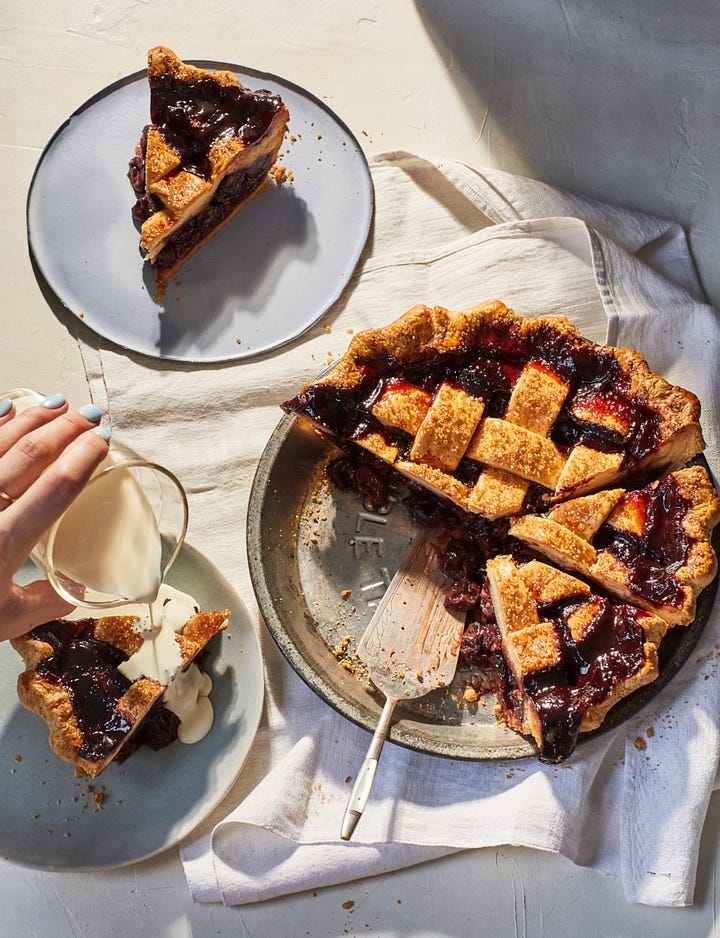

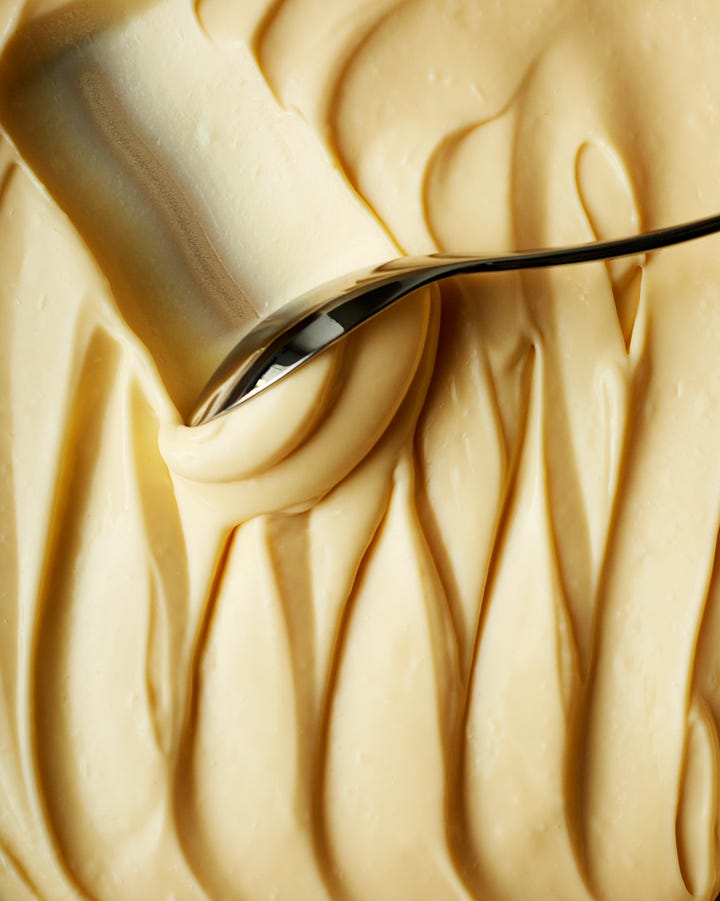
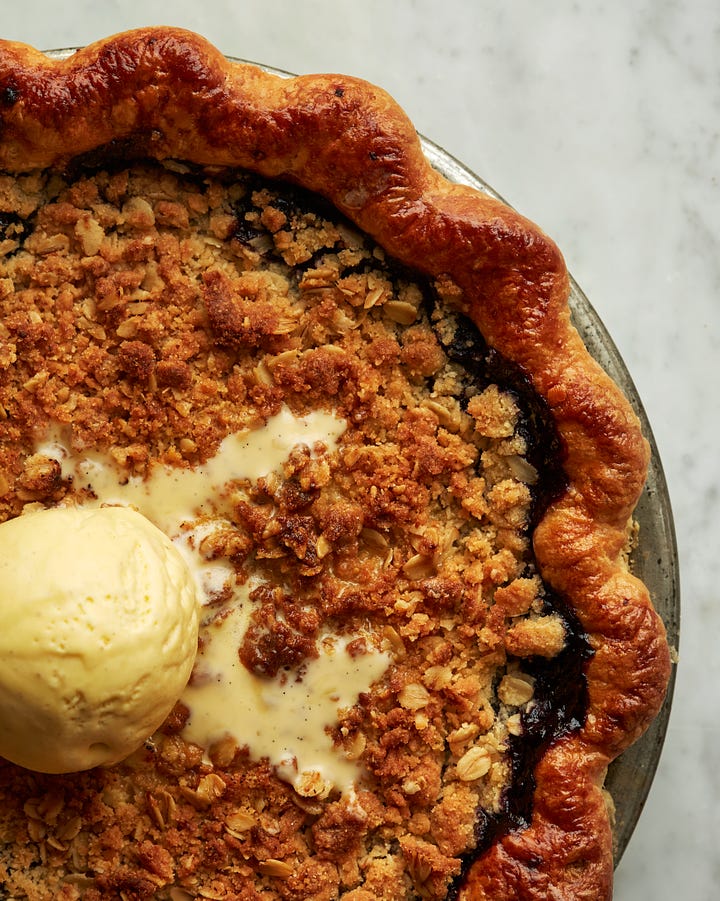
What is the maddest food styling job you’ve ever worked on?
I worked on a cookery show for a few years called Step Up to the Plate, where two teams of 9-14 year olds set up a restaurant, and run a full lunch service for members of the public. As well as the normal role of tv food stylist, the food team helped the kids design their menus and set up their sections, (shoutout to food producer Luke Boatright for bringing one contestants fantasy of luminous yellow, duck shaped bao buns to life) - all whilst making sure they didn’t cut/burn themselves, or collapse from over excitement during service.
It was absolutely as mad as it sounds, but they coped so brilliantly - better than alot of adults do in the same situation I can tell you. I loved that show - the mad jobs are usually the best (…often in hindsight!).
Which kitchen tool can you not live without on set?
This is the hardest question you’ve asked as I love all my tools equally - I’m actually irrationally attached to my specific tools. My ‘on set’ tray normally has a couple of spray bottles (one with glycerine water for ‘everlasting’ mist), tweezers, cotton buds, small offset palette knifes, pipettes, some kitchen roll. But actually I think the one thing that solves a problem none of the others can, and makes the biggest difference, is a small directional blowtorch. A quick wave can bring the gloss back to a ganache, a fatty slick back to melted cheese, and make an ice cream boule a little more melty - again, all little textural details that give an image a little more.
If you had to host a dinner party and cook only from books that you’ve worked on, what would the menu be?
That’s a really tricky one - i’ve worked on so many brilliant books! For me, a dinner party should be all about ease, so you can spend time sat at the table and not at the hob. I like dishes that can be pre prepped and finished in minutes before serving.
To start… Matt Adlard’s Tangzhong Garlic Dough Balls from his excellent book ‘Bake it Better’ are a great tear and share starter, nestled together and baked in a screaming hot skillet for crispy edges and fluffy middles. Always, always extra garlic butter alongside for dunking/drinking.
My main would be from a book I had the pleasure of working on last year - one very close to my heart - that is not yet announced (sorry!). Risotto Milanese with Gremolata. A buttery little lake on a plate, with earthy, sweet saffron. Ultimate comfort food - it’s one of my absolute favourites and has lovely memories for me.
I feel like people can get very protective over dessert, so I like to treat guests to an individually plated dessert they do not have to share - Milk Panna Cotta with Burnt White Chocolate and Soy from Sift was something surprising I ate last year. I’m a big fan of an umami heavy dessert, and paired with the milky, lactic sour/sweetness of the panna cotta, this dessert was unreal. I think about it far too often.
Lastly - I always send people home with a few bake-from-frozen cookies from my ever-replenishing freezer stash, to soothe any next day hangovers.
Hannah Wilkinson is a prop stylist based in London. Pretty much every single plate, spatula, fork or tray you’ll see in SIFT was picked by Hannah - the prop stylist is crucial in giving cookbooks a specific feel and energy. She has impeccable taste. Previous projects of hers include The Great British Bake Off: A Bake For All Seasons, Kolkata by Rinku Dutt, Simply Vegan Baking by Freya Cox and The Peaky Blinders Cookbook by Rob Morris.
I didn’t fully understand or comprehend the importance of prop styling before embarking on the cookbook process. I was blown away by what you did! Could you describe the role of a prop stylist, and share a typical day in your life?
A prop stylist’s job is to source and style all props necessary for a photoshoot. As I typically work in food photography, this will be ceramics, glassware, cookware etc. plus the surfaces, backdrops and flowers. Basically everything in the shot that isn’t the food!
A typical day in my life is very varied which is one of my favourite things about the job. When prepping for a shoot I mostly hire what I need from prop houses - often I will go to two or three prop houses in a day. The job involves a lot of travelling around London and it’s been such a good way to get to know the city. On days that I have a shoot, I’ll either be on set with the team or I will ‘prop and drop’ which means I drop in to unpack in the morning, make sure everyone’s happy, and then head back out to prep the next shoot.
What was your journey into the world of prop styling? How would you suggest someone get started in this career? (also, are there any particular skills you need to have to be a prop stylist?)
I studied Fine Art Painting at university but I wasn’t sure what I wanted to do after. I was really interested in interiors and did an internship at Elle Decoration. After that, I ended up doing a work experience day with an amazing food stylist, Debbie Miller, and the client just happened to need an assistant the following day so I volunteered! After that, I started working part-time at Topham Street prop house and discovered prop styling. Many prop stylists started out working at prop houses as it’s the perfect way to learn how the business works - I would definitely recommend that as a good place to start.
As far as skills go, you obviously need to have a good eye for composition and colour. Aside from that, the main one would be time management! You’re often working on multiple shoots at once and it’s completely down to you to source everything you need - within budget - and make sure it get’s to the right place at the right time.
Where do you draw inspiration from and how do you come up with a feel and look for the props?
As a prop stylist, you’re almost always working to a brief so you have to be flexible and be able to fulfil whatever look the client is after. It’s one of my favourite things about the job - it’s so fun when you get a mood board that is very specific to a particular style/era/place - or just very different to your own personal style. Pinterest is always good for inspiration if you’re not sure where to start and it’s a great way to collate your ideas. Plus, you have so many experts around you at the prop house so you can just ask - the lovely people at Lacquer Chest Props have been so helpful to me on books which require props from a specific time period.
What’s your most favourite ‘out there’ object you’ve had to source for a cookbook shoot?
Probably a Christmas tree in July… that might be my least favourite though!
Do you have any great tips on where to find beautiful plates or tableware for anyone wanting to expand their collection?
Yes - charity shops! I’ve found so many beautiful things in charity shops. I have an old dresser in my living room that displays all my favourite ceramics and I reckon 80% of it was found in a charity shop.
If vintage or antiques are what you’re after then antique markets are always a good place to start and Ebay is great if you know what you’re looking for. For new ceramics, Etsy is amazing. Also, if you’re London-based, Turning Earth (@turning_earth) are a group of pottery studios that hold markets throughout the year and are a great place to pick up new pieces and discover new potters.
One of my favourite ceramicists is SkandiHus by Stine Dulong (@skandihus_london). A friend bought me one of her beautiful moon plates for my birthday a few years ago and I love it. At the moment, I’m also really loving the work of Ashleigh Fisk (@af_clay). I have one of her star candle holders but I’ve got my eye on the black cat bowls.
If you had to host a dinner party and cook only from books that you’ve worked on, what would the menu be?
To start… Kimchi & Blue Cheese Gyoza Pizza’s + Yuzu Margarita’s from Otsumami by Atsuko Ikeda (I ate an embarrassing amount of these on set).
For mains.. Chelo Kebab from Kolkata by Rinku Dutt.
To finish… Summer Pudding with Gin-Infused Berries from the Peaky Blinders Cookbook by Rob Morris.
A slightly bizarre menu but these are some of the best things I’ve eaten on set!
Lucy Rose Turnbull is a London based chef and food stylist. She was the food styling assistant on the book, working alongside Holly on producing everything for the shoot and making it look its best. She is a total multi hyphenate talent, running supper clubs, developing recipes and food styling across London.
You split your time between food styling, cheffing & hosting supper clubs and recipe development. What’s a typical ‘day in the life’ (or week, if that’s easier since you have such a varied career!) for you?
I don’t think typical exists, it really is so changeable but the one common factor is always food in some form! I enjoy the varied days, it never gets boring but sometimes I do crave some routine & stability.
This last week has involved, one day sourcing props for a two day shoot with a regular client. Two days on the shoot, food styling, which are non-stop long days but fun working with the team. A morning of recipe testing & planning with Emma for our Spring Seasonal Supper Club coming up in a couple of weeks. Quite a bit of admin, the extra work you have to do when you’re self employed. Then planning & ordering for 3 day shoot next week alongside baking 250 cookies over the weekend…It tends to be all or nothing in the free-lance world, this month is busy but January was very quiet.
Do you have any advice you could share for someone who wants to break into the world of food styling?
It takes time, it took me over a year to start to get regular assisting work and to now be leading 3 years in. My experience prior to this was multiple years of baking, managing a kitchen, spending time upskilling on short courses. My advice would always be not to give up, but to go away and gain skills & experience that will help you.
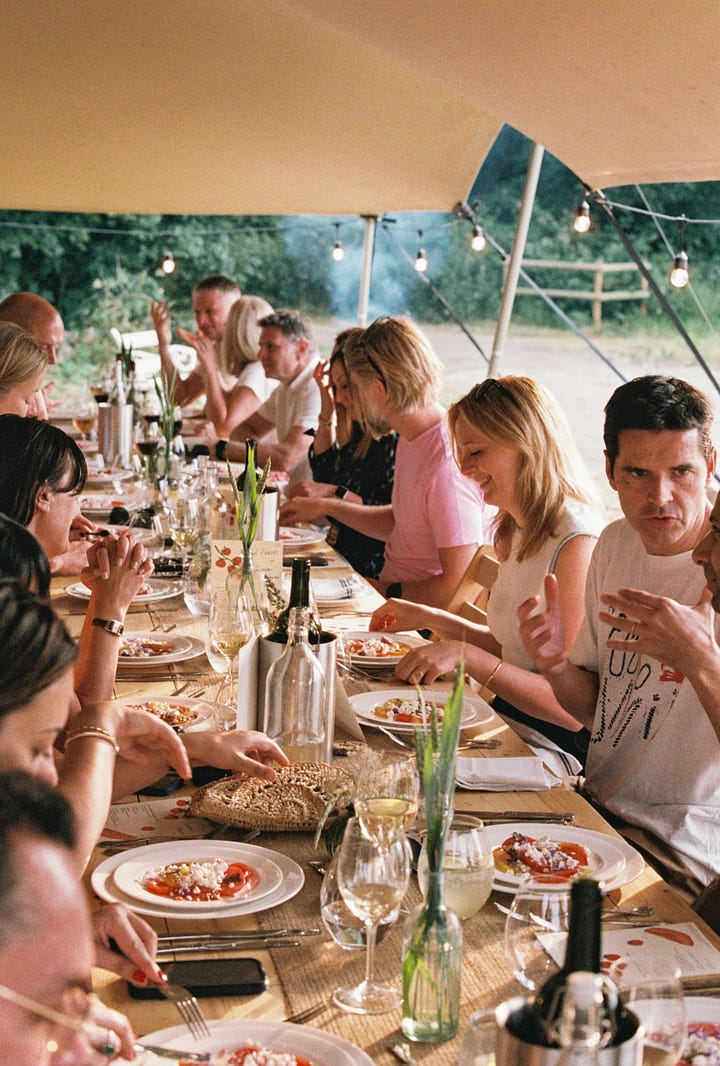
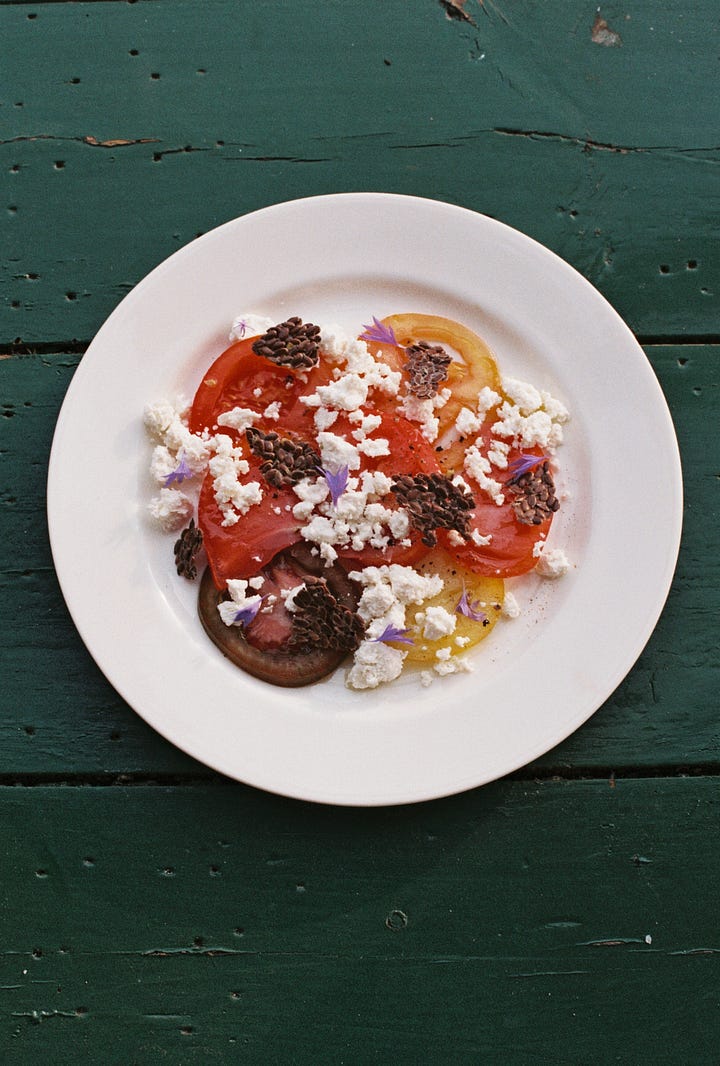
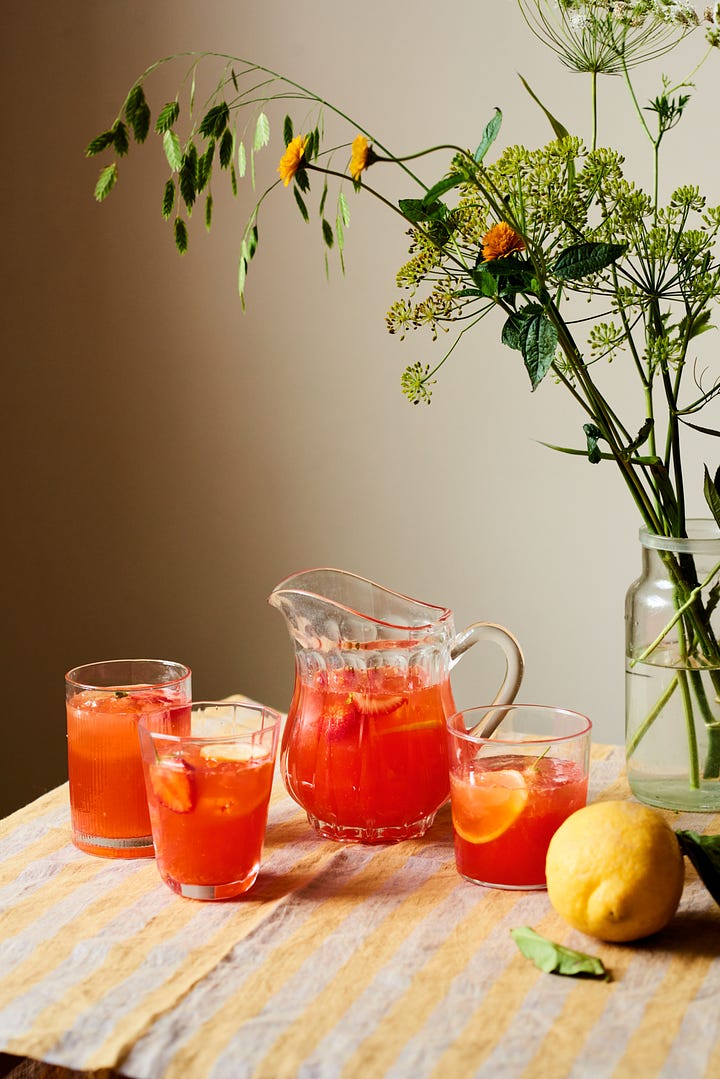
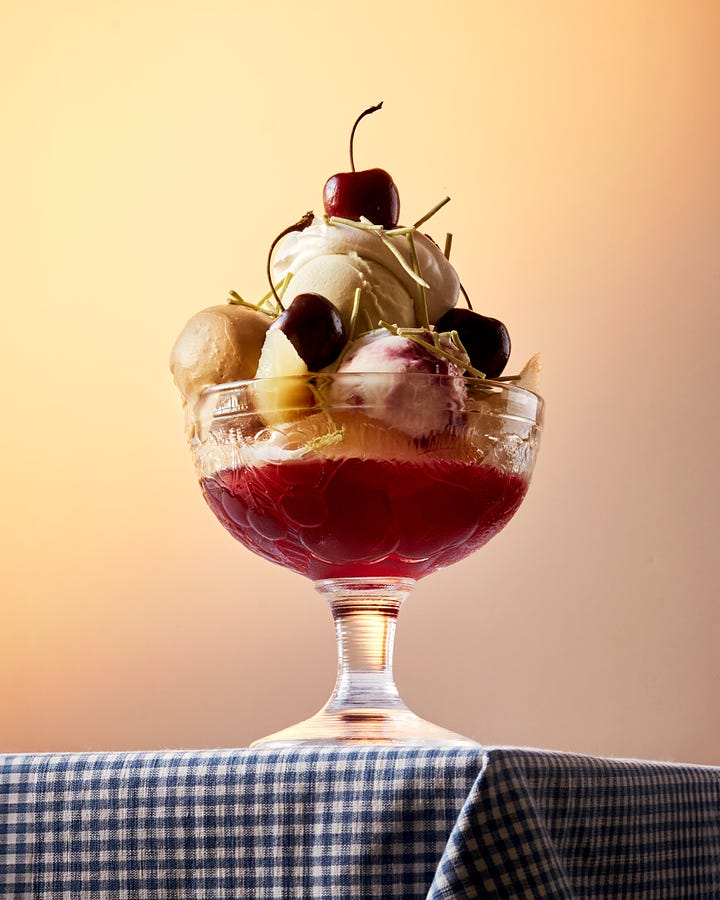
Part of a food stylists job is making sure everything looks its best for photographs - do you have any favourite tips that we could try at home to make our photos better?
Good natural light! always take your photo’s near a window in the daytime. Invest in nice crockery & table cloths, if like me, you don’t have any great surfaces at home, this will make a world of difference. Food styling starts from when you choose your ingredients, how you cut your veg or which dish you choose to bake in. Consider how your end dish will look throughout the cooking process and this will help you achieve a better final image.
What is your absolute favourite, and least favourite, food item to style or work with?
Favourite, a big ice cream sundae or fun dessert (not in a heatwave though!). Least favourite has to be wraps or tacos, they’re a challenge.
If you had to host a dinner party and cook only from books that you've worked on, what would the menu be?
This is such a hard question, there have been SO many delicious things.
To start… Homemade Bao Buns (like making literal dough clouds) with lots of fillings from Uyen Luu’s latest book…coming soon!
For mains… Prawn & Pistachio Tagliolini from Table For Two by Bre Graham (pasta is always a crowd pleaser and this dish is delicious!)
To finish… Chocolate Orange Fudge Cake from Bake it Better by Matt Adlard (it’s a showstopper (beautifully styled by Holly in the book! and there would be plenty leftover for the next day…win win)





![a8a0c8d8-16b9-4bb5-89f6-6d0b925f180f.MOV [video-to-gif output image] a8a0c8d8-16b9-4bb5-89f6-6d0b925f180f.MOV [video-to-gif output image]](https://substackcdn.com/image/fetch/w_1456,c_limit,f_auto,q_auto:good,fl_lossy/https%3A%2F%2Fsubstack-post-media.s3.amazonaws.com%2Fpublic%2Fimages%2F8cbd028d-13ba-48be-a36d-b4e65e3f3e39_480x848.gif)
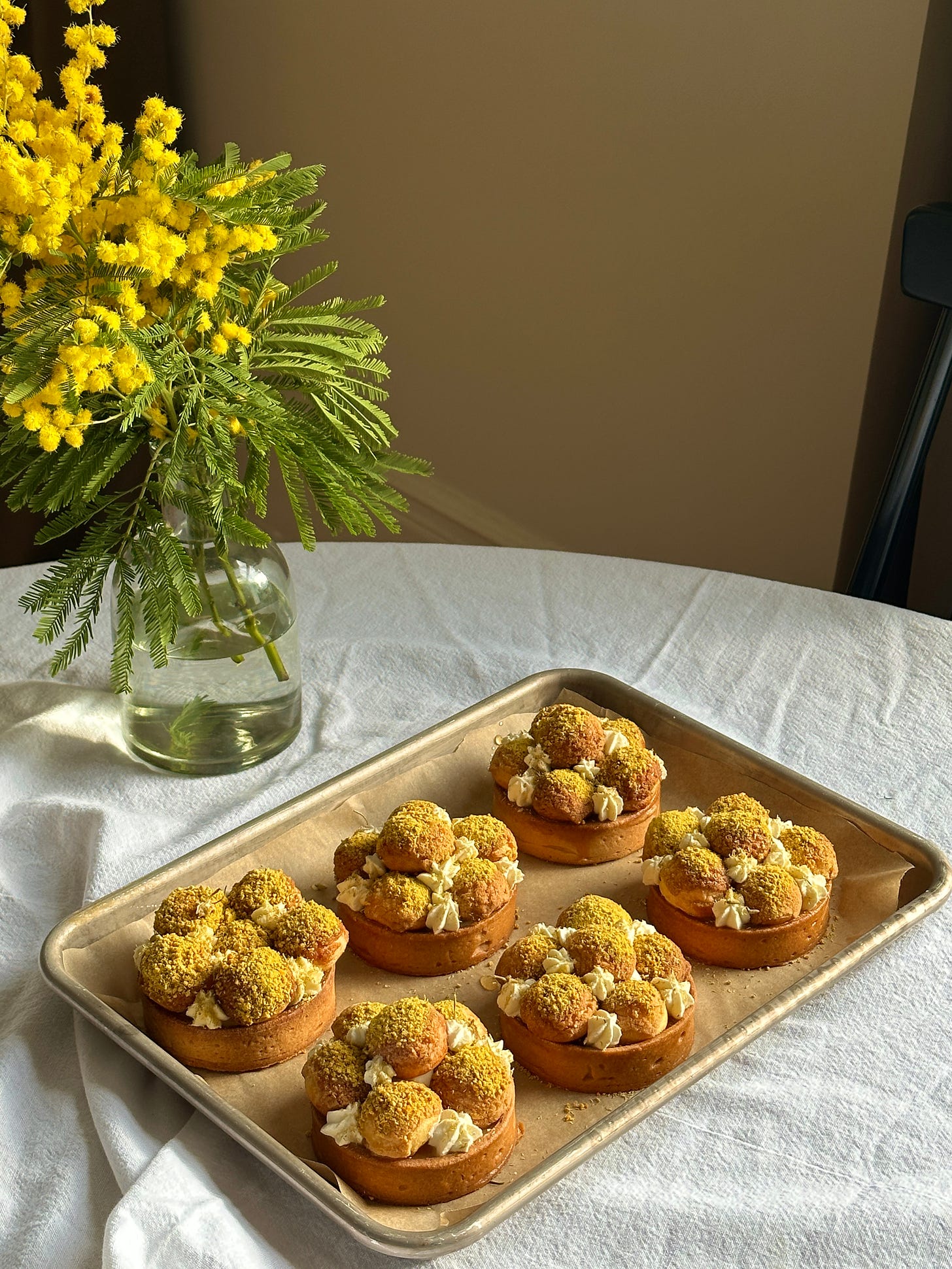
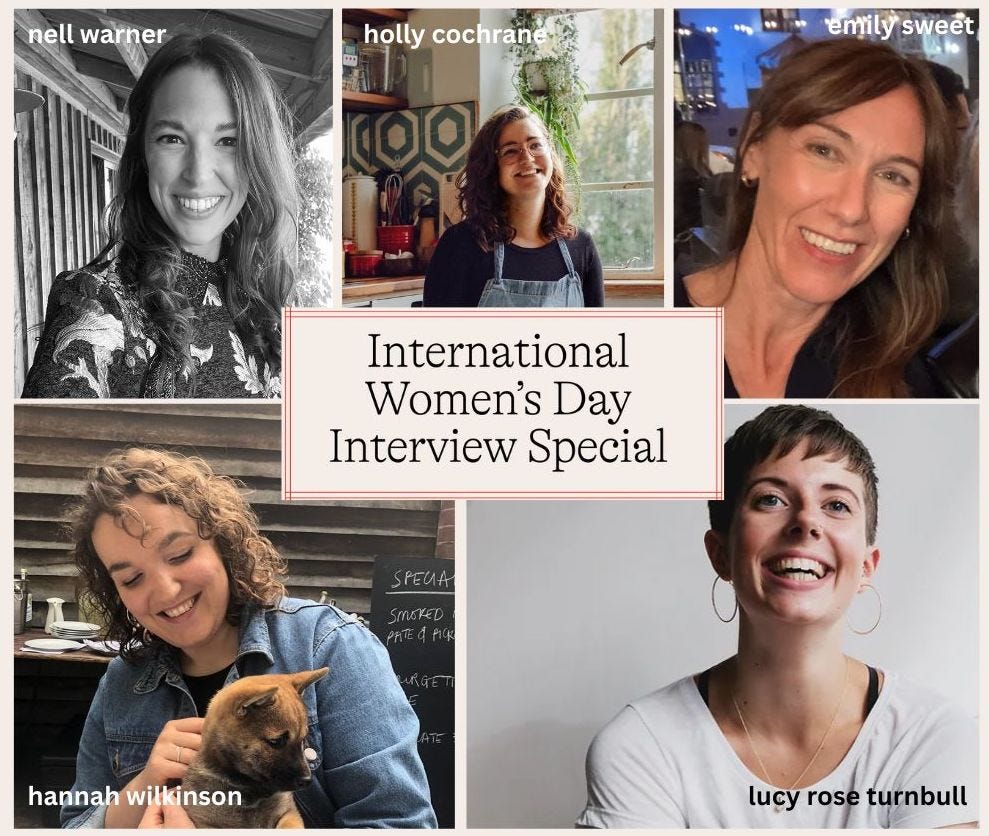



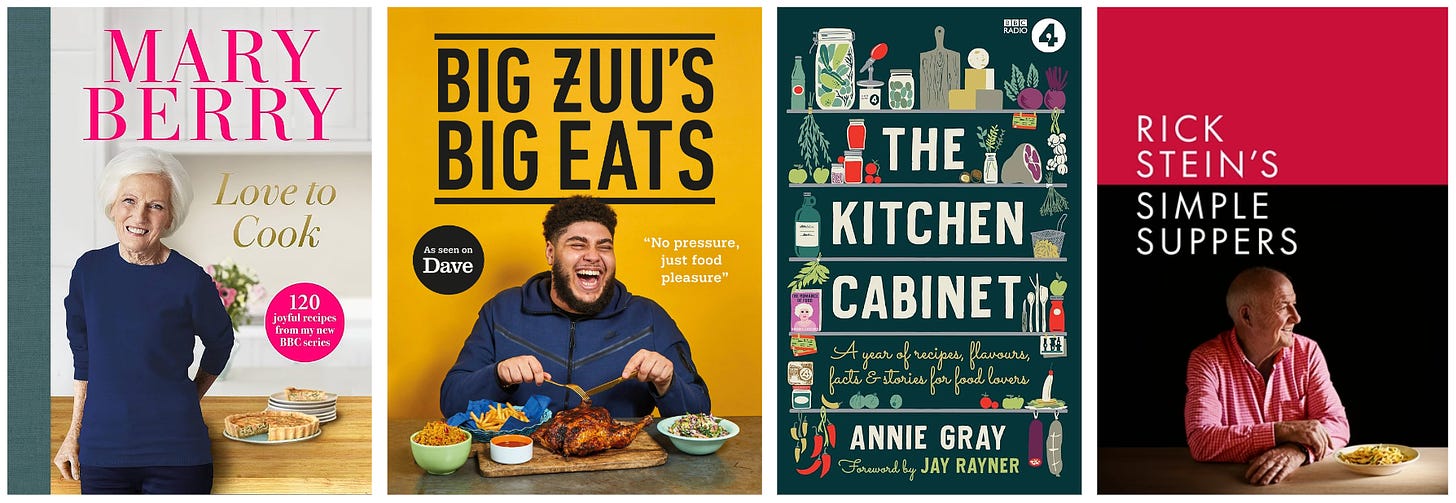





WOW!!! Thank you for taking the time to put this together
Is the book available for pre-order in the US or just in the UK for now?